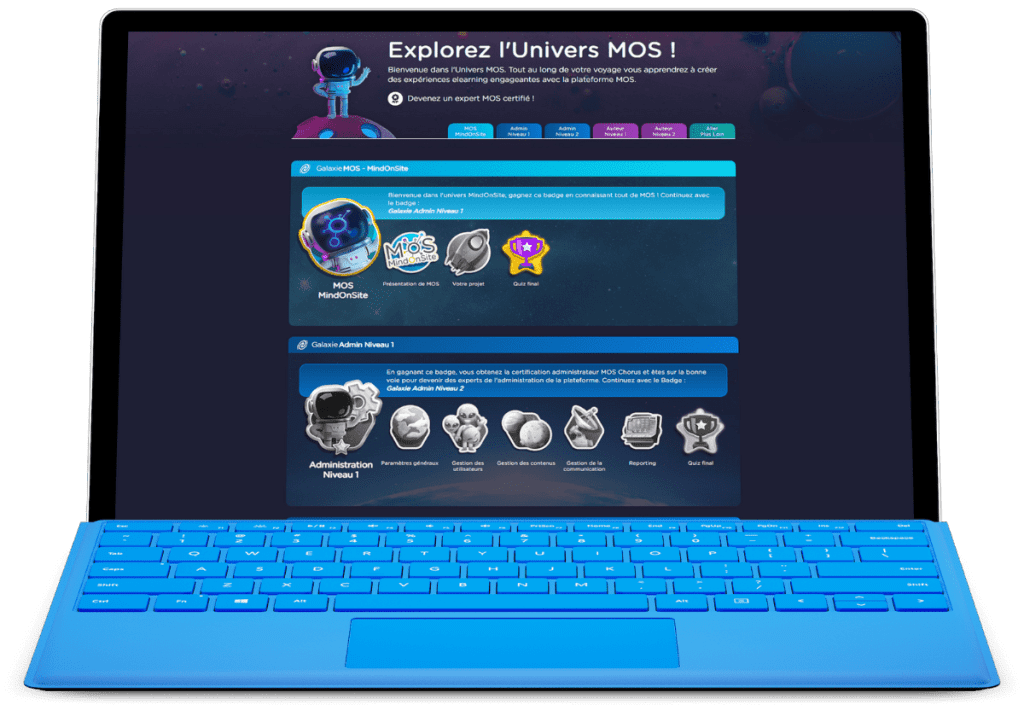Everything you need to know about gamifying onboarding in companies
Onboarding a new recruit to your team is an extremely important moment that needs to be carefully prepared. In order to make the induction process easier and develop a good dynamic within the company, many managers use gamification in their onboarding process. In this article, we offer you an overview of gamified onboarding and the challenges it represents for the company, in contrast to a traditional onboarding process.
The labour market in 2022: emerging trends in employee onboarding
The world in which we live is prone to many changes that push companies in all business areas to innovate and reinvent themselves constantly in order to succeed.
In recent years, against the backdrop of the health and social crisis, many companies faced a shortage of talent due to an increasingly volatile generation looking for renewal. However, with digital development, new trends in recruitment are emerging. This is particularly true for gamification, a process that consists in implementing game mechanisms in a specific business area without any apparent link to the world of games.
The process of integrating new recruits (onboarding) is crucial for the sustainability of the company. The implementation of a gamification strategy in a recruitment context offers candidates the opportunity to immerse in the company’s culture and understand faster the stakes of their new responsibilities within the company.
Gamification for onboarding: a crucial issue for companies?
Famous companies around the world such as Google, Facebook, Apple, Orange or Ikea integrate a gamified dimension into their onboarding process. The benefits of gamified onboarding offer a multitude of advantages for both the employee and the company:
To convey a dynamic and positive image of the company
The new generation has very specific expectations regarding their future workplace. The financial dimension is not the only criterion that will tip the balance. Today’s candidate is looking for real experience in which they will feel involved and useful on a daily basis. The first impression made by the company is therefore crucial and decisive for the future.
Implementing an innovative, fun and immersive program through game mechanisms during the onboarding process will undoubtedly gain you points over competing companies. In addition to conveying a modern, dynamic and positive image, the candidate will understand that his or her daily life in the workplace will be both enjoyable and stimulating.
Did you know that? Around 45% of resignations take place during the first year after hiring, which is why it is important to prepare your onboarding well (Source: “Les chiffres clés de l’onboarding” – Workelo).
Immerse the candidate in the company’s culture
Successful integration undoubtedly involves immersing the candidate in the very heart of the company’s culture and values. For that, games remain one of the best ways to welcome your new recruit and give him or her every opportunity to integrate into the world of your company.
Treasure hunt, virtual escape game, immersive visit of the premises … Game is a powerful communication tool, a vector of information, which allows the candidate to become familiar with their new work environment, to get to know their teammates and to be immediately operational and productive on the job.
In addition, gamifying the onboarding process is a great way to make your new recruit aware of your company’s business objectives, the knowledge and skills he or she will need to learn, and the responsibilities of the new position. Successful onboarding encourages the candidates to prove themselves and stay with the company longer.
Analyse cross-cutting competences
From now on, a recruiter will no longer base his decision on the theoretical or technical knowledge of the candidate. A company with long-term objectives will tend to focus on transversal skills, also called soft skills.
This may involve, among other things, analysing adaptability, the ability to synthesise and analyse, methodology, autonomy, initiative, interdisciplinary or the way of communicating or interacting with others, etc.
The real-life situation allows the company to understand better the psychological profile of the new recruit, as well as giving the candidate an overview of the tasks he or she will have to perform. As the labour market is constantly evolving, recruiters are looking for versatile and proactive profiles, capable of adapting to various changes and contributing to the success of the company.
Increasing the retention rate
In a company, the retention rate is the percentage of employees who have kept their job within a defined period. The importance of a successful onboarding process is that if an employee leaves the company, it has negative repercussions in terms of finance, workforce and brand image.
It is worth noting that around 80% of employees decide to continue their career in the company in question within the first six months of employment (Source: “Les chiffres clés de l’onboarding” – Workelo).
Implementing a fun, immersive and innovative onboarding strategy promotes employee engagement with the brand, develops a sense of belonging within the group and helps build trust between the manager and the candidate. All of these elements lead to an increase in the retention rate and consequently a decrease in the risk of turnover. The gamification of the onboarding process should be seen as a real investment that pays off in the long run.
How to implement a gamification strategy to successfully onboard your employees?
To integrate successfully your new recruit through gamification, it is essential to have a strategy in place:
- Step 1 – Identify the objectives to be achieved: gamifying the onboarding process is not a decision to be taken lightly. First, you need to identify clearly the objective(s) you want to achieve. Developing employee commitment, strengthening group cohesion and team spirit, boosting motivation and productivity or reducing the risk of turnover, etc. A clear and precise vision of your objectives helps you frame the process so that everything runs smoothly.
- Step 2 – Choose the type of gamification you want to offer: the choice of game is an essential element that will be determined according to the company’s needs and culture. There is a multitude of fun, immersive and innovative activities to offer your employees (virtual escape game, treasure hunt, construction game, puzzle-solving game, duel/competition, immersive visit, badges, levels, etc.). To spice up the game, you can personalise it by adding your own touch (reverse the roles according to the level of responsibility, change the location or environment, form teams, etc.), which will enable you to better analyse the behaviour of your employees.
- Step 3 – Define the rules and set up a reward system: A compliant game is established through a framework and rules. It is therefore imperative that all members are aware of the rules and the ins and outs of the game. The latter includes key elements such as missions to be carried out, levels to be reached, obstacles to be overcome or rewards to be won, which spice up the game and give it a fun, playful and entertaining dimension.
The experience of gamification in training: a winning combination
Gamification does not only stop at the borders of corporate recruitment. Many other industries are using this powerful marketing technique, especially in the field of training and e-learning.
Recent studies have highlighted the benefits of learning through play, which include increased motivation, stimulation of the creativity, better integration of knowledge and improved communication/relationships.
As a powerful vector of commitment, gamification of learning systems has a great success with training centres or companies that have set up a continuous training system to train their employees to maintain the company’s competitiveness on the labour market.
And for good reason, here are the 3 ingredients of engagement according to Clément Muletier, gamification expert:
Onboarding is also about customers and partners!
You can express your brand and corporate culture through your training portal. Thanks to it, give your customers and partners a fun and engaging experience through graphic and functional customisation. You can gamify your onboarding device with levels, badges, points to encourage progression and ensure customer loyalty.
Customer and partner onboarding will allow you to make it easier to get started with your solutions by providing the tools, resources and knowledge that each of your customers needs to contribute to the success of the customer/provider relationship.
Here is an example of an onboarding process, implemented at MOS – MindOnSite, for our own clients.
Customers are invited to visit training content and take quizzes in order to pass the different levels and acquire badges. The final objective is to reach the highest level of completion and obtain the “MOS Chorus Expert” certification. All this while taking them into a parallel universe, with a touch of storytelling, for a 100% unique and immersive experience.
As a leader in the development of digital training solutions, MOS – MindOnSite will support you at every stage of your training programme, offering your learners an immersive, engaging and innovative training experience, incorporating all aspects of gamification!




